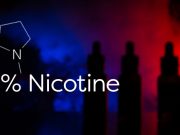CAPNOS co-founder and CEO Brendan Wang said that he struggled with a vape addiction for five years, starting from his freshman year at high school. “It’s just something that I just did and didn’t really think too much about,” he said. “I didn’t really have any intentions of stopping, but then when I became more conscious about it, I was like, ‘Am I able to stop?’”
Eventually Wang decided to understand his habit cycles and by reading about behavioral psychology, he came up with the idea for the CAPNOS Zero, a smokeless and nicotine-free pressurized air inhaler. The device is designed to function as a behavioral aid, by inhaling flavoured air.
In line with study findings, on surveying thousands of vapers, Wang found that most e-cigarettes users (as do smokers) suffer from a behavioral addiction, or the act of vaping, rather than an actual addiction to nicotine. “We vape so often and develop a nicotine tolerance, so we’re no longer achieving that sense of satisfaction from each hit,” Wang said. “At that point, it has evolved into an oral fixation, or behavioral addiction, where the addiction lies in the desire just to hit something.”
NYTS data
On a different note, analyzing cross-sectional data from the CDC’s National Youth Tobacco Survey data between 1999 and 2020, researchers at the University of Alabama at Birmingham have found that cigarette smoking amongst teens has consistently decreased in parallel with an increase in vaping.
The research team found that while the use of e-cigarettes has drastically increased since 2014 and is the most commonly used nicotine or tobacco product among middle and high school students, this has led to a sharp decrease in the use of more harmful combustible tobacco products.
They also found that the CDC’s any tobacco product use measurement, a binary measurement which asks if someone has used any tobacco product in the past 30 days, fails to differentiate between nicotine products relative to their risks. “The majority of cigarette brands contain similar ingredients, concentration and chemicals,” said Ruoyan Sun, Ph.D., assistant professor in the UAB School of Public Health’s Department of Health Care Organization and Policy and a study researcher.
“Conversely, there are a wide variety of e-cigarette products with different chemical levels and makeups. To track nicotine and tobacco use patterns and their associated risks more accurately, surveys need to account for the frequency of product use and product-specific risks.”
Read Further: The State News












